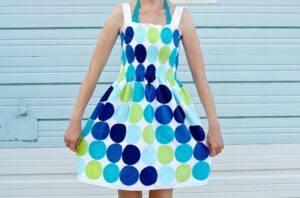Sunscreen And Beach Towels are Complementary Goods
Beach towels and sunscreen are complementary goods. This means that they are often purchased together. For example, someone who is going to the beach for a day is likely to buy both a beach towel and sunscreen.
The two products are often found in the same aisle at the store or advertised together in magazines.
Summertime is here and that means spending time outdoors! Whether you’re hitting the beach or just hanging out in your backyard, it’s important to protect your skin from the harmful rays of the sun. That’s why sunscreen and beach towels are complementary goods – they go hand in hand to help you enjoy your summertime fun while staying safe!
When choosing a sunscreen, it’s important to pick one that is broad spectrum and has an SPF of at least 30. This will provide the best protection against both UVA and UVB rays. And don’t forget to reapply every two hours, even if you’re not swimming.
Once you’ve got your sunscreen sorted, it’s time to grab a beach towel. Beach towels come in all sorts of sizes, colors, and patterns so you can find one that fits your style. But most importantly, they provide a place to lie down and relax without getting sand all over yourself.
Bonus points if they have a built-in pillow for extra comfort!
So there you have it – sunscreen and beach towels are the perfect pair for a fun and safe summer. Now get out there and enjoy the sunshine!
What is Complementary Supply?
Complementary supply is when two goods or services are used together. For example, cars and gasoline are complementary goods because you need both to operate a car. Other examples of complementary goods include: printer and ink, peanut butter and jelly, shoes and socks.
When the demand for one good increases, the demand for its complement also increases.
What Happens When Two Goods are Complements?
When two goods are complements, it means that they are often used together. For example, peanut butter and jelly are complementary goods because people usually eat them together. This is different from two goods that are substitutes, which means that people would use one instead of the other (such as coffee and tea).
There are a few things that can happen when two goods are complements. First, an increase in the price of one good can lead to an increase in the demand for the other good. This is because people will still want to purchase both items, but may be willing to switch to a cheaper alternative for one of the items if the price goes up too much.
Additionally, an increase in the income of consumers can lead to an increase in demand for both complementary goods. This is because people will have more money to spend on all kinds of products, not just necessities. Finally, changes in fashion or trends can impact the demand for complementary goods.
For example, if a new style of clothing becomes popular, people may start buying more clothes overall as well as accessories like jewelry and purses to go along with their new outfits.
Royal Caribbean: Things I'd Wish I'd Known Before Visiting Perfect Day at CocoCay
The Law of Supply States That As Price Increases Ceteris Paribus
The law of supply states that, other things being equal, an increase in the price of a good or service will result in an increase in the quantity supplied. The opposite is true for a decrease in price. This relationship is represented by the upward-sloping portion of the supply curve.
The amount that suppliers are willing and able to sell at any given price is known as the quantity supplied. The quantity supplied refers to the total amount of a good or service that producers are willing and able to sell when they receive a certain price for it. The law of supply demonstrates the positive relationship between prices and quantities supplied.
In general, when prices go up, suppliers produce more of a good or service (quantity supplied increases), and when prices go down, suppliers produce less of a good or service (quantity supplied decreases).
There are several factors that can cause changes in supplier willingness or ability to provide goods or services at any given price point. These include production costs, technology, government regulations, weather conditions, and availability of raw materials.
A change in any one of these factors can cause a shift in the entire supply curve.
Law of Demand Quick Check
In microeconomics, the law of demand is an economic law that states that, all else being equal, as the price of a good or service increases, consumer demand for the good or service decreases. In other words, the quantity demanded (the amount of a good or service that consumers are willing and able to purchase) falls as price rises.
Law of Supply Quick Check
In microeconomics, the law of supply is the fundamental economic law that states that, all other things being equal, an increase in the price of a good or service will lead to an increase in the quantity supplied. This is represented by the upward-sloping nature of the supply curve. The law of supply demonstrates the quantities that sellers are willing and able to sell at various prices.
The key factors influencing the law of supply are: seller’s expectations about future prices, input prices, technology, taxes and subsidies. All else being equal, as any of these factors change (movement along the curve), it will result in a movement along the supply curve. A change in any one of these factors other than price will cause a shift in the entire supply curve.
An example of how this works can be seen with farmers who grow wheat. If they expect wheat prices to rise in future periods due to an increase in demand from bakers (perhaps due to an approaching holiday where people will consume more baked goods), they may choose to plant more wheat this season. This would lead to an increase in quantity supplied at each price point (the farmer would be willing to sell more wheat at each price).
Conversely, if farmers expected wheat prices to fall, they would cut back on planting and reduce their quantity supplied at each given price point.
What is the Difference between Supply And Quantity Supplied
In economics, the terms “supply” and “quantity supplied” refer to the quantity of a good or service that is available for sale. The term “supply” refers to the total amount of a good or service that is available, while “quantity supplied” refers to the amount that is actually being offered for sale at a given price.
The relationship between supply and quantity supplied can be illustrated by using a simple demand and supply diagram.
In this diagram, the quantity supplied is represented by the horizontal axis and the price is represented by the vertical axis. The point where these two axes meet is called the equilibrium point. At this point, there is no shortage or surplus of the good or service in question; instead, there is exactly enough to meet all demand at that particular price.
Supply and quantity supplied will increase as prices increase up to the equilibrium point; beyond this point, however, an increase in price will lead to a decrease in both supply and quantity supplied. This occurs because people are willing to sell less of a good or service when they can get more money for it elsewhere. Similarly, suppliers are willing to offer less of a good or service when they can get more money for it elsewhere.
Which of the Following is Not a Determinant of Demand?
It’s a common misconception that all of the following are determinants of demand: price, income, preferences, and prices of related goods. However, this is not the case – only three of these factors are actually determinants of demand.
So, which one is not a determinant of demand?
Preferences are not a determinant of demand – rather, they’re a determinant of quantity demanded. Put simply, preferences determine how much of a good or service people are willing to consume at a given price point. So while changes in preferences can certainly affect demand, they don’t directly determine it.
This might seem like a small distinction, but it’s an important one to understand when trying to analyze and predict consumer behavior!
Oversized Beach Towels
Oversized beach towels are a must-have for any beach day. They’re big enough to lay on, wrap around you, and even share with a friend. Plus, they dry off quickly and can be easily packed up for the trip home.
Here are a few things to keep in mind when shopping for oversized beach towels:
1. Look for a towel that’s at least 60 inches wide and 80 inches long. This size will give you plenty of room to lie down or wrap around yourself without feeling cramped.
2. Choose a quick-drying material like cotton or microfiber. These fabrics will dry off quickly after a dip in the water or laying in the sun.
3. Find a beach towel with fun prints or bright colors that match your personality.
Oversized towels are available in all sorts of styles, so take your time browsing until you find the perfect one!
4. Be sure to check the care instructions before purchasing an oversized beach towel. Some materials may require special care, such as hand-washing or line-drying.
5. Once you’ve found the perfect oversized beach towel, don’t forget to pack it up before heading to the shore!
Beach Towels for Kids
Beach towels are a must-have for any kid who loves to play in the sand and water. But with so many options on the market, it can be hard to know which one is right for your child. Here are a few things to keep in mind when shopping for beach towels for kids:
Size: Make sure to choose a towel that’s big enough for your child to comfortably lie down on. You don’t want them to be cramped up in a small towel!
Design: Kids love colorful and fun designs, so look for beach towels that feature their favorite characters or patterns.
Absorbency: A good beach towel should be absorbent enough to dry off your child quickly after they’ve been in the water. Look for towels made from cotton or microfiber materials.
Durability: It’s important to choose a beach towel that will stand up to repeated use and washings.
Avoid thin or flimsy materials – they won’t last long!
Wholesale Beach Towels
Beach towels are a must-have for any trip to the beach or pool. But why settle for ordinary when you can find wholesale beach towels that will make your time in the sun even more enjoyable? Wholesale beach towels come in a variety of colors, styles, and sizes, so you’re sure to find the perfect one for your needs.
And because they’re sold at a discount, you can stock up on multiple towels without breaking the bank.
When shopping for wholesale beach towels, keep in mind what activities you’ll be using them for. If you plan on doing a lot of swimming, look for a towel that is quick-drying and absorbent.
If you just want something to lounge on by the pool, choose a thicker towel that will be more comfortable. You should also consider the size of the towel; if you have young children with you, smaller towels may be more convenient.
Once you’ve found the perfect wholesale beach towel, don’t forget to add some fun accessories to complete your look!
A colorful sarong or pair of flip flops will help you stand out from the crowd while keeping your belongings safe as you enjoy some time in the sun.
Conclusion
While many people believe that sunscreen and beach towels are two completely different items, they actually go hand-in-hand. Sunscreen is essential for protecting your skin from harmful UV rays, but it can also be quite messy. Beach towels are the perfect solution for keeping your sunscreen off your clothes and body.
Plus, they absorb any excess sunscreen so you don’t have to worry about it dripping all over the place.






